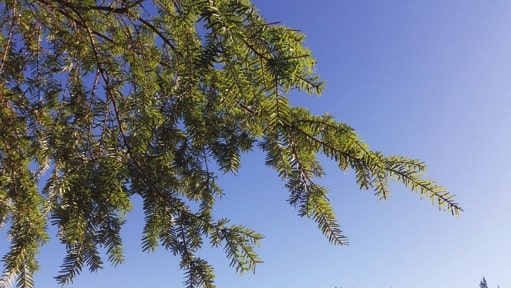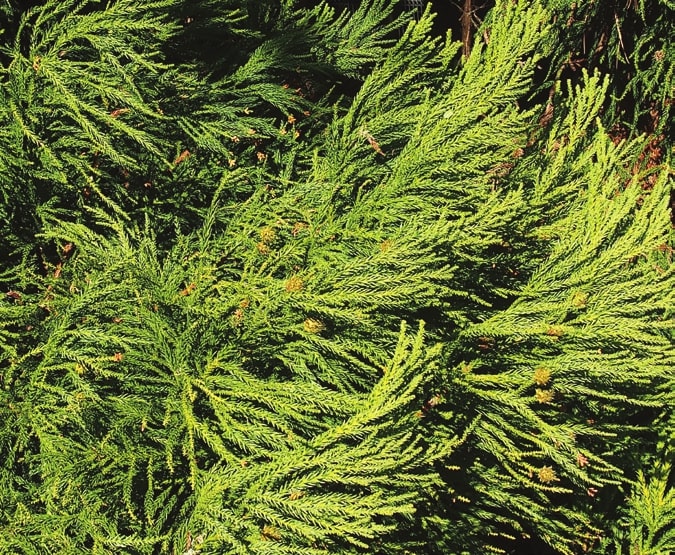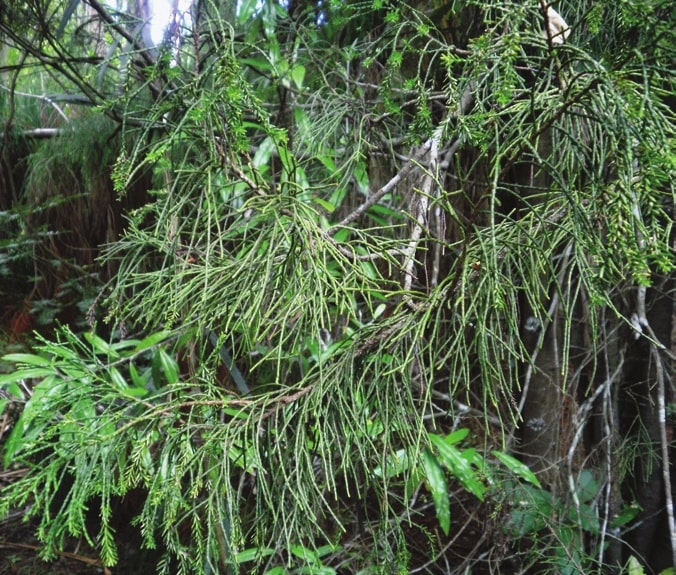A world of aromas: Wake up and smell the trees
Michelle Harnett, New Zealand Tree Grower August 2020.
Most of us look at plantation forests and see the wood, and perhaps paper and cardboard. We do not think about plastics, petrol or pharmaceuticals but these and more, can all be made from trees. This is summed up nicely by the quote ‘Anything made from fossil-based materials today can be made from a tree tomorrow’ from Stora Enso, a Finnish pulp, paper and bioproducts company. The quote is apt and has been gleefully appropriated by organisations around the world who are developing bioproducts from trees – Scion included.
First a chemistry lesson
Trees are complex organisms which contain thousands of different chemicals, ranging from simple sugars to massive lignin molecules. One family of chemicals are the terpenes, of which conifers in particular produce large amounts. Most of these smell strongly and may protect the trees by deterring herbivores and inhibiting micro-organism growth.
The terpene family is large and active. The simplest are hydrocarbon monoterpenes. The main monoterpene extracted from Pinus species is imaginatively named pinene. Limonene is a monoterpene found in citrus fruits. Terpene units can hook up in all sorts of ways, with two units forming a diterpene, three a triterpene and so on. Basic units can also pick up an extra oxygen to become a terpenoid, extending the family business, so to speak. The active ingredients in cannabis are cannabinoids.
While terpene is not exactly a word we drop into everyday conversation, we come in contact with them continually. Pine, orange, peppermint, eucalyptus and lavender, for example, flavour everything from toilet cleaners to personal care products, cosmetics, food and drink.

Traditional terpene products
Traditionally, terpenes have been extracted from conifer resins as turpentine. The tree bark is cut and the resin is collected which is released from resin ducts in response to the damage. Initially sticky and impossible to wash off your hands, it normally hardens into a protective bandage on the tree and the terpenes it contains help inhibit bacterial and fungal growth. When the resin is heated, the terpenes evaporate off, are caught and condensed into turpentine.
Turpentine is now used in the chemical industry as a base for producing solvents, cleaners, fragrances, dry cleaning and insecticides. The turps we buy to clean paint brushes is mineral petroleum-based turpentine. The solid material left behind after the terpenes are removed is rosin, which is also used in a range of industrial products.
Chemicals and more from trees
Terpenes and other chemicals can be directly extracted as an essential oil from just about any part of a plant using a variety of processes. For example, citrus peel is pressed to force out oil it contains. Heat or steam can be used to release volatile components. Soluble compounds can be extracted into water and other solvents such as alcohol or acetone.
Another form of solvent removal is supercritical carbon dioxide extraction. Carbon dioxide reaches the supercritical state where it is neither a gas nor a liquid but has properties of both at a relatively low temperature and pressure, allowing the collection of heat sensitive oils. When the temperature and pressure drop, the carbon dioxide becomes a gas again, leaving a pure essential oil behind.
Manuka and kanuka oil extracted from the leaves and twigs using steam are probably the two most well-known essential oils produced in New Zealand. Not so well known is that Douglas-fir essential oil is produced near Queenstown. The company Wilding & Co collect wilding Douglas-fir, chip them, then use steam distillation to extract the citrusy-smelling oil. In 2019, they processed 30,000 wilding pines in the Wakatipu Basin and exclusively supply their oil to doTERRA, a large essential oils company based in Utah. A five millilitre bottle of Douglas-fir essential oil retails for $47.99 on the website.
Totarol
Trees and plants contain many other bioactive compounds aside from fragrant monoterpenes. A New Zealand example is diterpene totarol, an antimicrobial which can be extracted from totara timber using supercritical carbon dioxide technology. A cool $1,000 buys you two grams of totarol.
Once the essential oils have been extracted producers can be left with a lot of waste. Wilding Co are working with local food businesses to use their combined waste in a compost-based propagation system for native plants. An alternative way to deal with waste is to adopt a biorefinery method where biomass is converted into a variety of products and energy. This mimics the way crude oil is processed into fossil fuel products in a refinery, making a reality the quote ‘Anything made from fossil-based materials today can be made from a tree tomorrow’.

Starting with a pulp mill
Pulp and paper plants are frequently mentioned as a possible biorefinery starting point. They already have established networks to supply feedstocks and have, for a long time, produced methanol, lignin, tall oil fatty acids, rosins and turpentine as by-products of the pulping process. It is easy to imagine pulp mills expanding to further process or refine chemicals which can compete with petroleum derived feedstocks.
Wood-sourced diesel is already being produced by a biorefinery next to a pulp and paper mill in Finland. The Finnish forestry company, UPM, says this is the first commercial scale biorefinery in operation, producing 160 million litres a year from terpenes extracted from black liquor.
Ethanol has also been produced by fermenting black liquor. The Tembec pulp mill in Quebec used the same yeast as beer brewers to ferment components in spent sulphite liquor to ethanol. At one stage Tembec was producing 15 million litres a year of alcohol, mostly for food and beverages.
A bark bio-refinery
Under-used piles of bark in New Zealand forests are growing as more log debarking takes place. Scion estimates that processing bark to extract high value materials could contribute up to $1.8 billion to New Zealand’s GDP. Scion started a five-year bark biorefinery research programme in 2018 to develop ways to extract and refine tannins for leather tanning and chemical production, extract water-proofing compounds and biochemicals with antioxidant and antibacterial properties. The remaining solid waste, which has a high residual energy content, could be used as a renewable energy source. The research is supported by the Ministry for Business Innovation and Employment’s Endeavour Fund.
To date, the project team has been working with New Zealand-based leather processors to identify and evaluate tannin for producing environmentally friendly, luxury New Zealand leathers. Tannins have long been used in leather production. Tannins bind permanently with proteins in animal hides, making the hides more supple, more durable and more resistant to bacterial attack. Most contemporary leather tanning processes use chromium, which is toxic to humans and the environment.
Scion has also been working with Pharmalink in Nelson to test industrial scale extraction of pine bark. One product from this extraction trial is a mixture of soft natural waxes much like petroleum-derived paraffin wax, suggesting use in cosmetics and skin care products. Natural waxes also have potential to replace water repelling petroleum-based materials. Finally, the remaining bark residues have been successfully processed into bark briquettes for use as a renewable energy source which can be easily handled and transported for use in boilers and furnaces. Scion hopes to be ready to start the process of finding partners to develop a demonstration plant by 2023.
Bio-refineries also have the potential to supply essential oils and other specialty biochemicals with antioxidant, antibacterial and other qualities. Canadian company BoreA is a good example of how a biorefinery-type operation produces energy and essential oils. They distil oils from twigs and needles of black spruce and other plants. The residues from this process, and residues from a timber mill, fire an electricity plant and provide steam for the distillation process. Ashes from the power plant are used as agricultural fertiliser.
Could forestry smell sweeter?

With the increasing possibilities for extractive processing, commercially growing less common tree species known for their fragrant woods and oils could be an attractive option. True cedars spring to mind. The fragrant compounds in cedar wood make it resistant to fungal and bacterial attacks and help repel insects – properties which have made cedar the wood of choice for chests and closets for storing textiles for centuries.
Atlantic cedar and Himalayan cedar have been planted throughout New Zealand, often as amenity trees. They are not often planted for timber although some small to medium forest owners are keen supporters. This is particularly so in the Hawke’s Bay where Himalayan cedar has been found to grow well on dry, cold, exposed, poor quality sites. The timber is used for decorative purposes and in these situations is naturally durable, retaining its pleasant scent.
Many different trees with scented woods are called cedars, one of which is the Japanese cedar or sugi. Its pinkish-red wood is scented, lightweight but resistant to decay. The timber is widely used in Japan for all types of construction and interior panelling. In New Zealand, the trees are reported to be frost hardy and wind tolerant and with narrow, upright growth suitable for shelterbelts on good soils. Japanese cedar also flourishes on the West Coast, where they growing as quickly as radiata pine and capable of producing good sized six metre clearwood in under 30 years.
Frankincense and myrrh
Climate change could open up the possibilities of growing tropical and desert plants in New Zealand. For example, Northland could conceivably have a banana industry. It may also be possible to grow shrubs and trees whose resins and gums have been prized since antiquity, such as sandalwood. Australia has a very successful sandalwood industry, growing the tropical Indian sandalwood and the temperate dryland Australian sandalwood in the Western Australian wheat belt, the semi-arid land east of Perth. It may be suitable for northern and coastal areas locally.
The plants which produce the fragrant Biblical resins frankincense and myrrh are native to the Middle East. Myrrh grows in dry environments in thin soil and higher altitudes. Frankincense trees can grow in very rocky conditions. These might be interesting options for the eastern coasts of both islands in sheltered spots that do not get too cold. Unfortunately, a Google search does not turn up any results for either plant growing in New Zealand, although both have been reported in southern California and Arizona.
Indigenous trees
Manuka and kanuka are already harvested and processed to extract their essential oils. But there are other, less well known fragrant native woods, including two cedars and pink pine.
Pink pine contains the valuable terpenoid manool, which is a precursor to ambergris and used as a base for perfume. It grows at higher altitudes, from the volcanic plateau to the deep south, usually on low fertility, poorly drained sites in high rainfall areas. It can reach 12 metres in height in favourable conditions but on very exposed sites forms a low, creeping shrub. Pink pine is possibly the most durable of New Zealand native woods. Interestingly, it does not seem to have a Maori name.
Pink pine contains up to eight per cent of its dry weight as manool, the highest level found in any plant. Several attempts have been made to extract manool. However, most of the supply grows on Department of Conservation land, ruling native forests out as source. Ngai Tahu have been investigating potential use but this work does not seem to have progressed to commercial production.
There are a lot of unknowns around pink pine. For example, it should grow quickly on moist, well-drained, fertile sites, but how quickly? And will a faster growth rate alter the amount of manool iin the heartwood? Reasonably moist and fertile sites in the central North Island may be suitable for trials.

Another pine, the silver pine or manoao, which is common on the West Coast, also has very durable timber and contains high levels of manool and manoyl oxide. Its potential as a producer of valuable chemicals and a very durable timber makes it an interesting candidate for a native species to be grown commercially, but as with pink pine, there are many unknowns.
Breeding new chemical factories
Pine bioproducts are the largest non-food based renewable supply of hydrocarbons and already big business worldwide with the global market expected to reach over US$7 billion by 2030. The global production of terpenes from conifers is close to four million tonnes with a portion of that already being used to make diesel, jet fuel and chemicals. As the world transitions to a more circular bioeconomy, an increased supply of bioproducts including terpenes, ex-biorefineries will be needed as the demand for biobased products grows.
Breeding and genetic engineering offer some opportunities to increase terpene hydrocarbon content in conifers and eucalypts. Conifers, for example, produce and store quantities of terpenes in their primary and secondary resin ducts. If we can engineer or breed to increase the number and size of resin ducts we will increase terpene production and may be able to realise the vision of trees as factories.
Back to the future
Bioproducts are not new. Many of the materials and products we use today were originally from trees, but rising costs, shortages, industrialisation, standardisation and other factors have seen products such as resins, turpentine and chemicals for leather tanning increasingly made from petrochemicals.
Developing biorefineries and the biomass to supply them is critical for the transition of New Zealand to a circular bioeconomy and to ensure an environmentally and economically sustainable future. The starting point could be a pulp mill, a saw mill, a facility processing bark, or diverse industries clustered together in an industrial complex.
Much of the technology needed for biorefining already exists, and successful examples can be seen around the world. We need the commitment and will to bring different parts of the industry together to make biorefineries a reality in New Zealand. Small-scale forest owners can play their part as active participants in forestry and biomass value chains and growing specialist species for new products.
Michelle Harnett is the science communicator for Scion.

 Farm Forestry New Zealand
Farm Forestry New Zealand